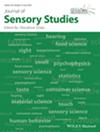Normative data for odor identification performance using the U-sniff test from Chinese children and adolescents
Abstract
The sense of smell is essential in daily life. Children with olfactory dysfunction face a series of problems, so assessing olfactory function during early-life period is very important. The Universal Sniff (U-Sniff) test is a widely used measurement of odor identification ability in children and adolescents, although there is a lack of normative data in China. Therefore, the aim of this study was to establish normative data for the U-Sniff test in a large sample of healthy Chinese children and adolescents. A total of 922 healthy children and adolescents (441 boys, 481 girls) aged 6–17 years from China were involved in this study. Odor identification performance was assessed using the U-Sniff test. The U-Sniff test mean score across all participants was 10.50 ± 1.73 points (range 1–12). U-Sniff test scores increased with age, and no effects of sex or an interaction between age group and sex were recorded in this population.
Practical Applications
There is currently no published data reporting normative data of the U-Sniff test among Chinese children and adolescents. From the present research, normative data for olfactory identification using the U-Sniff test have been established for Chinese population aged 6–17 years. This study provides routine measurements to support future examinations at hospitals, school check-ups and so on, which can help patients with reduced olfactory function receive appropriate therapy as early as possible.

 求助内容:
求助内容: 应助结果提醒方式:
应助结果提醒方式:


